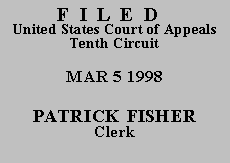

| UNITED STATES OF AMERICA,
Plaintiff-Appellee, v. SYLVESTER HUTCHINSON, Defendant-Appellant.
UNITED STATES OF AMERICA, Plaintiff-Appellee, v. CHERYL A. WILLIAMS, Defendant-Appellant. |
|
These two appeals present identical issues concerning the timeliness of a motion to vacate, set aside, or correct a sentence filed after the effective date of the Antiterrorism and Effective Death Penalty Act of 1996 (AEDPA), Pub. L. No. 104-132, 110 Stat. 1214. Appellants, who were co-defendants in criminal proceedings, both filed motions pursuant to 28 U.S.C. § 2255 on April 24, 1997. Appellant Hutchinson's judgment of conviction had become final in April 1994, and appellant Williams' judgment of conviction had become final in October 1993. Generally, because appellants filed their § 2255 motions more than one year from the date on which their respective judgments of conviction became final, both would be barred by the one-year limitations period that AEDPA added to the provisions of 28 U.S.C. § 2255.
In United States v. Simmonds, 111 F.3d 737, 745-46 (10th Cir. 1997), however, we concluded that applying the amended limitations period of § 2255 to a defendant whose judgment of conviction became final more than one year before AEDPA was enacted would be "impermissibly retroactive," because it would cut off his right to file a § 2255 motion as of the date AEDPA became effective, without any prior notice. Nonetheless, we did agree that giving such a defendant one year in which to file a § 2255 motion was reasonable. Id. at 746. Therefore, we held that "prisoners whose convictions became final on or before April 24, 1996 must file their § 2255 motions before April 24, 1997." Id. "[B]ecause Mr. Simmonds [had] filed his § 2255 motion prior to April 23, 1997, we h[e]ld the motion was timely." Id.
Relying on our opinion in Simmonds, the district court here sua sponte dismissed appellants' § 2255 motions as untimely, because they were not filed before April 24, 1997. The court also denied appellants' respective requests for a certificate of appealability.
On appeal, appellants both argue that the district court erred in denying them certificates of appealability and in dismissing their § 2255 motions as untimely. They contend that the plain language of Simmonds is not controlling, because it allegedly ignores a well-established rule that, in computing time, the day on which an event occurs is omitted from the calculation. Therefore, appellants argue, the date of AEDPA's enactment (April 24, 1996) should be omitted from the calculation of the one-year limitations period for a defendant whose judgment of conviction became final on or before April 24, 1996.
Before appellants may proceed on appeal, they must each obtain a certificate of appealability from this court. We will not grant the certificate absent a "substantial showing of the denial of a constitutional right." 28 U.S.C. § 2253(c)(2). Our opinion in Simmonds, which was issued before appellants filed their § 2255 motions in district court, required appellants to file their motions before April 24, 1997, i.e., on or before April 23, 1997. 111 F.3d at 746; see also Burns v. Morton, ___ F.3d ___, No. 97-5568, 1998 WL 15128, at *2 (3d Cir. Jan. 9, 1998) (holding that § 2254 habeas petition filed on or before April 23, 1997 may not be dismissed as untimely); Calderon v. United States Dist. Ct., 128 F.3d 1283, 1287 (9th Cir. 1997) (same), cert. denied, 118 S. Ct. 899 (1998), and petition for cert. filed (U.S. Jan. 26, 1998) (No. 97-7685); Lindh v. Murphy, 96 F.3d 856, 866 (7th Cir. 1996) (holding that neither a § 2254 habeas petition nor a § 2255 motion filed by April 23, 1997, may be dismissed as untimely), rev'd on other grounds, 117 S. Ct. 2059 (1997). Because Simmonds controls the issues raised on appeal, we conclude that appellants have not made a substantial showing of a denial of a constitutional right.
Therefore, we DENY the application for a certificate of appealability in No. 97-6259, and DISMISS the appeal. Likewise, we DENY the application for a certificate of appealability in No. 97-6264, and DISMISS the appeal.
Entered for the Court
Circuit Judge
*. This order and judgment is not binding precedent, except under the doctrines of law of the case, res judicata, and collateral estoppel. The court generally disfavors the citation of orders and judgments; nevertheless, an order and judgment may be cited under the terms and conditions of 10th Cir. R. 36.3.